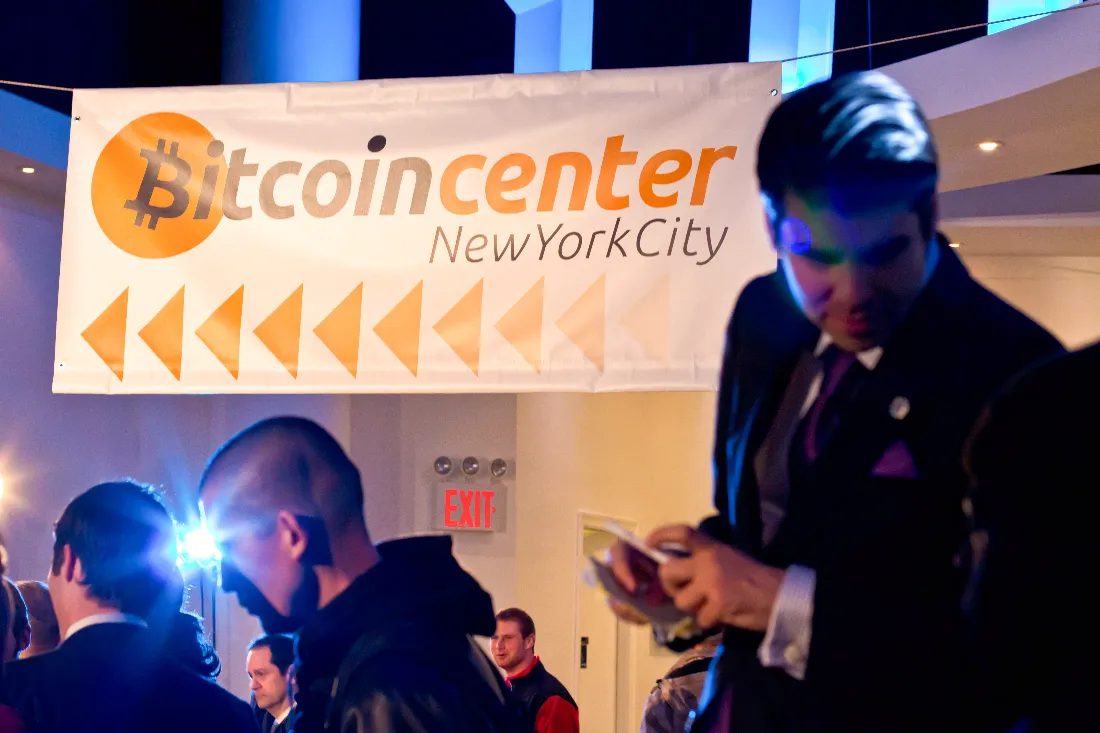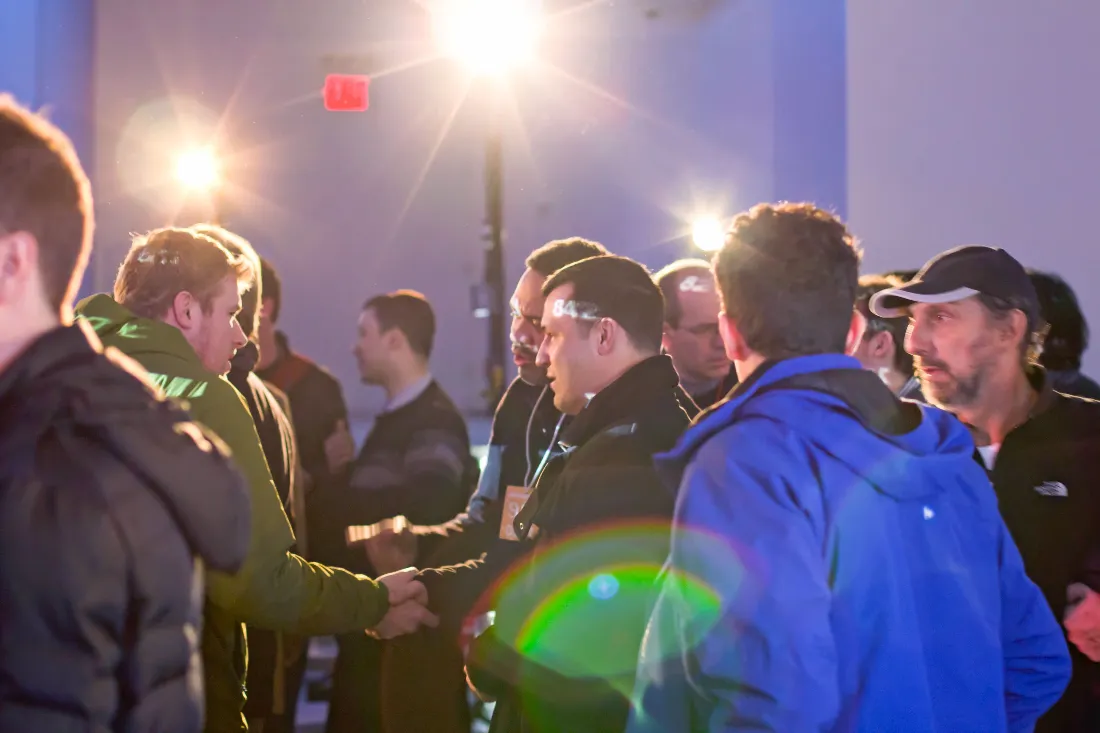OPEN OUTCRY
May 6, 2013
1BTC:$112.250000
- Artist
- Fact Date
- Fact #
- undefined
- Printing Specifications
- Paper / Stock
- Page Size
As Bitcoin’s market cap grew, it began to attract interest from city traders. In May 2013, three entrepreneurs decided to accelerate the crossover by establishing the Bitcoin Center in NYC’s financial district. It promoted Bitcoin and united buyers and sellers through an open outcry format that fuelled a thriving BTC trading floor in Satoshi Square.
Situated at 40 Broad Street in the heart of Manhattan's Financial District, the Bitcoin Center was just 100 feet from the New York Stock Exchange. This was no accident of real estate; it was a declaration of intent. By planting a flag in the shadow of the world's most powerful financial institution, the Center's founders were positioning Bitcoin as a serious contender in the global financial system.

At a time when Bitcoin was often derided as “magic internet money,” the Center sought to make it real. It offered a brick-and-mortar establishment where journalists, politicians, and curious investors could walk in and see for themselves what all the fuss was about.
The driving force behind the project was Nick Spanos, a larger-than-life entrepreneur with an eclectic background spanning real estate, tech, and political activism. With his force of personality and financial connections, he was the ideal candidate for conveying the magic and libertarian properties of Bitcoin.
The Center got off the ground with a soft launch in May 2013 and hit its stride on the last day of the year when it hosted a lively New Year’s Eve party attended by Texas Congressman Steve Stockman, who used the occasion to announce that his campaign would accept Bitcoin donations.

The Face of Bitcoin
Once established, the Bitcoin Center NYC quickly evolved into a multifaceted institution that was simultaneously a trading floor, university, startup accelerator, and community nexus. Life inside the Center was a unique blend of financial theatre, grassroots evangelism, and raw technological innovation, creating an environment that was instrumental in shaping Bitcoin's identity during a critical period of its growth.
The weekly highlight was the biweekly trading events hosted in “Satoshi Square.” Held on Monday and Thursday evenings, these took an “open outcry” format: a communication system of shouts and hand signals borrowed directly from the historic trading pits of institutions like the New York Mercantile Exchange and the Chicago Board of Trade.
An auctioneer would stand before the crowd, shouting out bids and asks as traders pushed through the crowd to get the best price for Bitcoin. While electronic trading had already rendered most physical trading floors obsolete, the Center's embrace of this seemingly anachronistic practice aligned with the chaotic, intensive nature of Bitcoin. It also made for quite a spectacle.
Jeff Roberts recalls: “From 5-7pm, a cluster of around 20 or 30 Bitcoin believers gathered to buy or sell. The transactions involved some people calling out prices, and others holding paper envelopes of cash – mostly $100 bills. If two people agreed on a price they would exchange wallet addresses by means of a QR code or cut-and-paste.
“The first group that assembled can be best described as crypto-anarcho punks; young guys who were a little disheveled and slightly paranoid, often sporting interesting hairstyles or carrying unusual accessories. The second were Wall Street guys. A little bit older, wearing very fine suits and carrying a lot of cash. The final group were the crypto curious who wanted to learn a little more about Bitcoin but were not prepared to dive in just yet.”
What the open outcry lacked in order-book efficiency it more than made up for in theatre. This was performance art and the thronged crowds were captivated. It transformed lines of code into a boisterous spectacle, helping to make Bitcoin “real” to the assembled throng. On a more practical level, it provided a solution for P2P cash transactions. This allowed individuals to buy and sell Bitcoin without a bank account and with fewer fees than online exchanges – while also allowing for haggling.
While the Bitcoin Center served as a hype machine when Bitcoin was on the rise, broadcasting its existence to city traders, it took on a different role during times of crisis, forming a haven when the markets were melting down. When Mt. Gox failed, business continued as usual in Satoshi Square, the conviction of its traders undented.
Nothing good lasts forever – at least not when it isn’t licensed – and it was inevitable that regulators would begin circling, seeking to put an end to the unregulated commerce. New York’s implementation of the onerous and much-maligned BitLicense spelled the death knell for the Bitcoin Center. But at its peak, when the sun was shining and the bids and asks were being shouted out across Satoshi Square, there was no better place to be.
- Artist
- XXXXX
- BTC On this day
- May 6, 2013
- Market Cap
- $1,248,410,825
- Block Number
- 234,866
- Hash Rate
- 83.69 TH/s
- Price Change (1M)
21%
- Price Change (3M)
444%
- Price Change (1Y)
2122%
